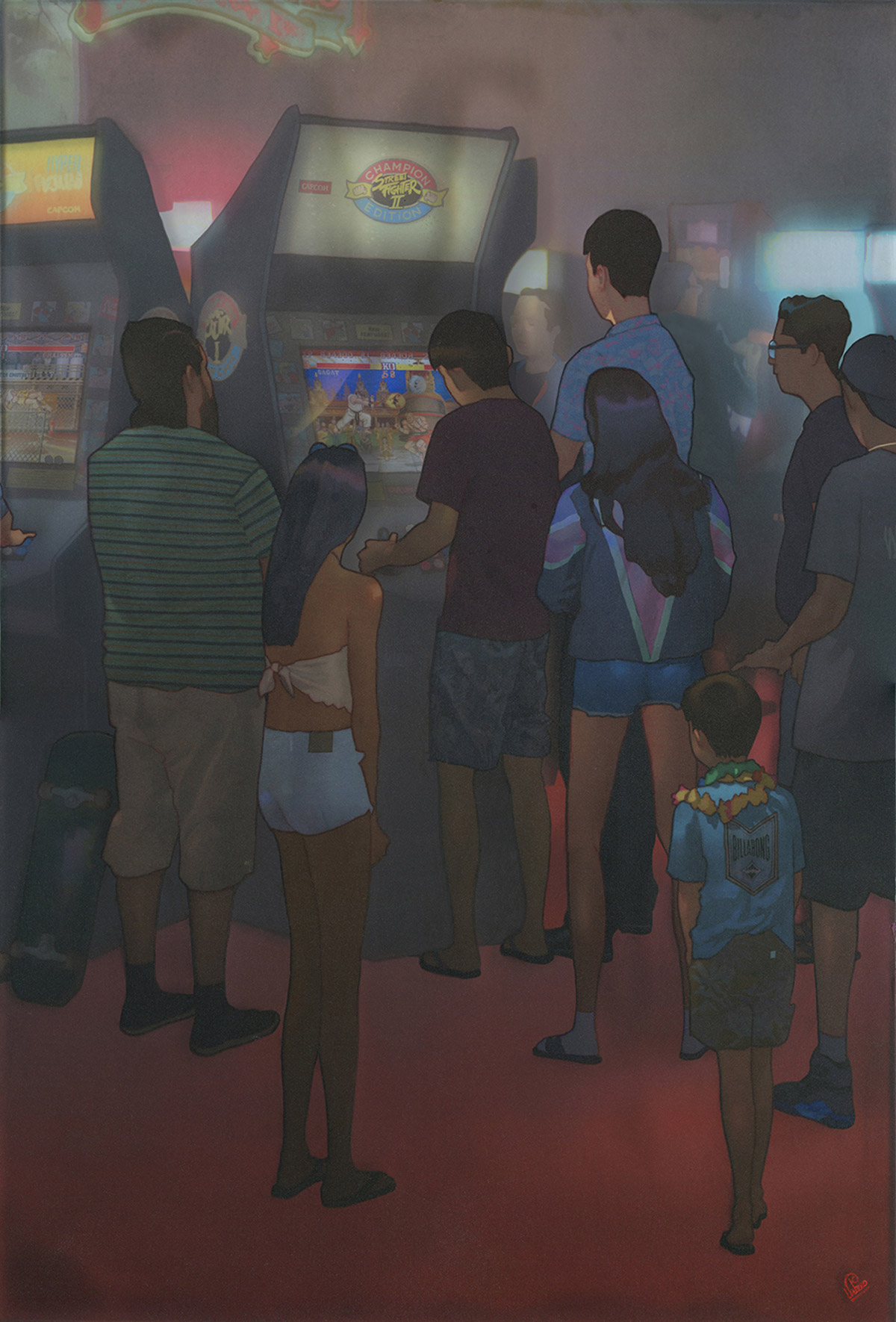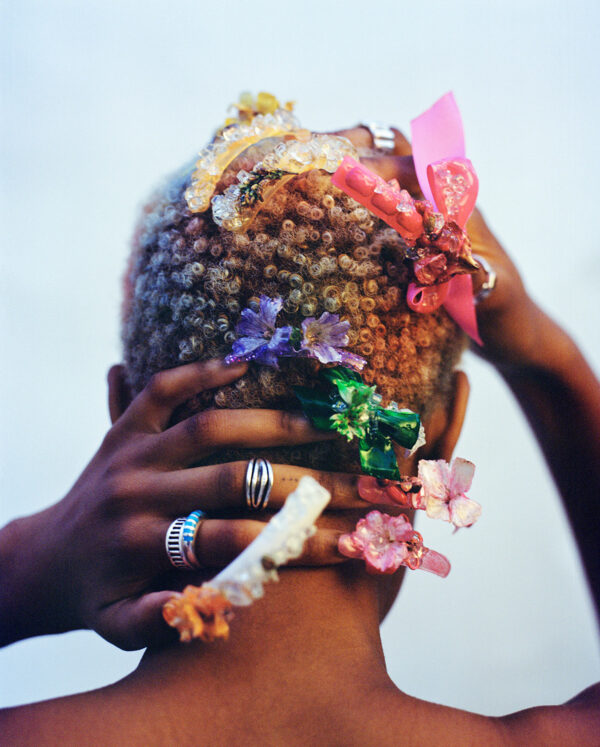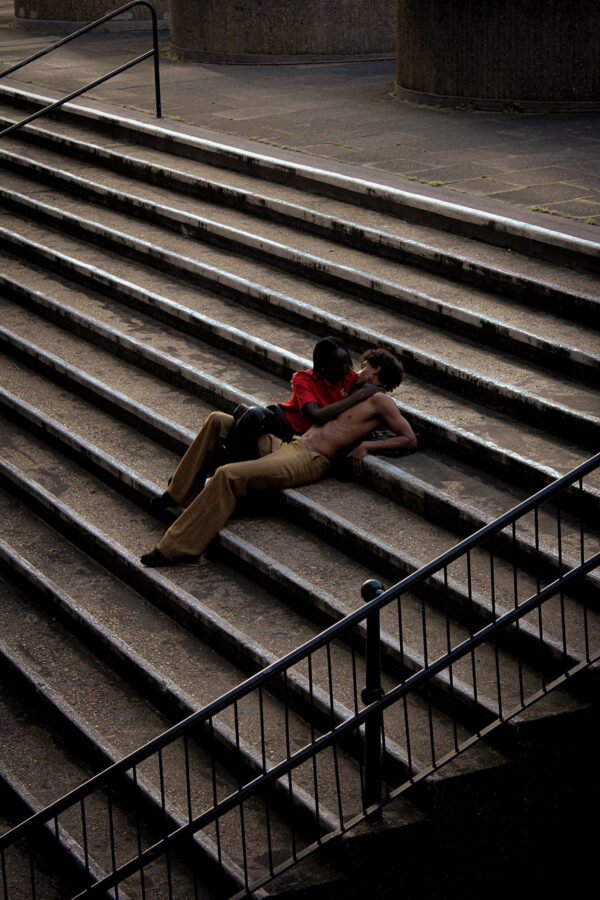A couple weeks ago we held an “Ask Me Anything” community interview with Los Angeles-based artist Edwin Ushiro. Known for his unique style and connection to his home state of Hawaii, Ushiro kindly responded to a bunch of questions submitted ahead of time as well as during the live session via our Booooooom Slack Community.
Big thank you to Edwin for fielding so many great questions from our community. From insights into his creative process to his role as a teacher, check out more from the AMA below along with some images created by our community members.
Annette Womack: I read that you utilized plexi in a piece. I’m always so fascinated by artist’s personal mixed media processes and I’d love to hear more. It seems to create such depth and sense of space to your work.
Edwin Ushiro: My work deals with history and ghosts. Both are things that will vanish through time. It was only natural that my medium be something transparent to express them.
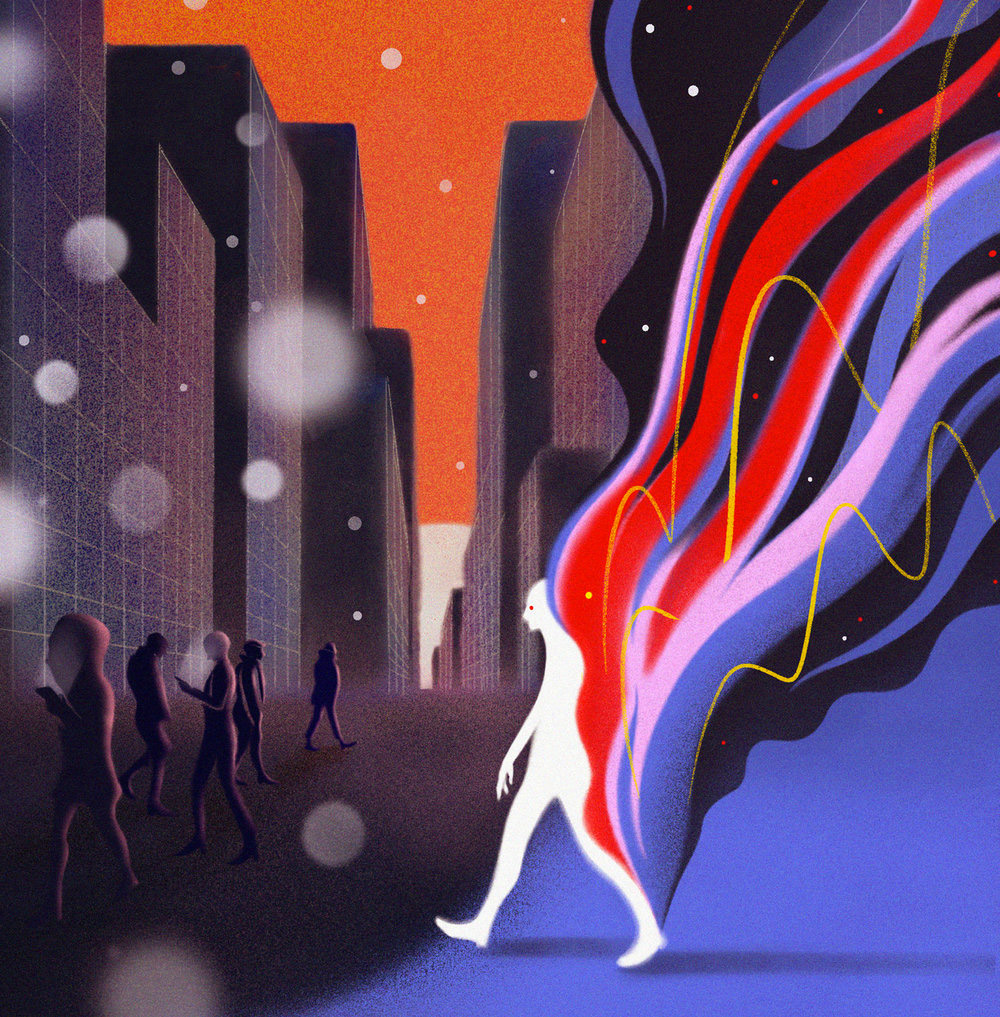
Jeremy Leung: My question relates to your amazing understanding of lighting and shadow in your paintings. Do you have any tips for practicing this and drawing the viewer’s attention to various parts of your piece?
Edwin Ushiro: The understanding of lighting and shadows can be learned from studying through drawing and painting your surroundings. For this reason, it’s a good habit to carry and utilize a sketchbook. Carry it around or fit it into your pocket.
Jeff: Do you find that you learn different things drawing from real life rather than a photo?
Edwin Ushiro: Yes, there is an energy that you are able to capture in life drawing as compared to a photo. Once you learn how to capture that energy, it’s easy to incorporate it into your work when real life is not available.
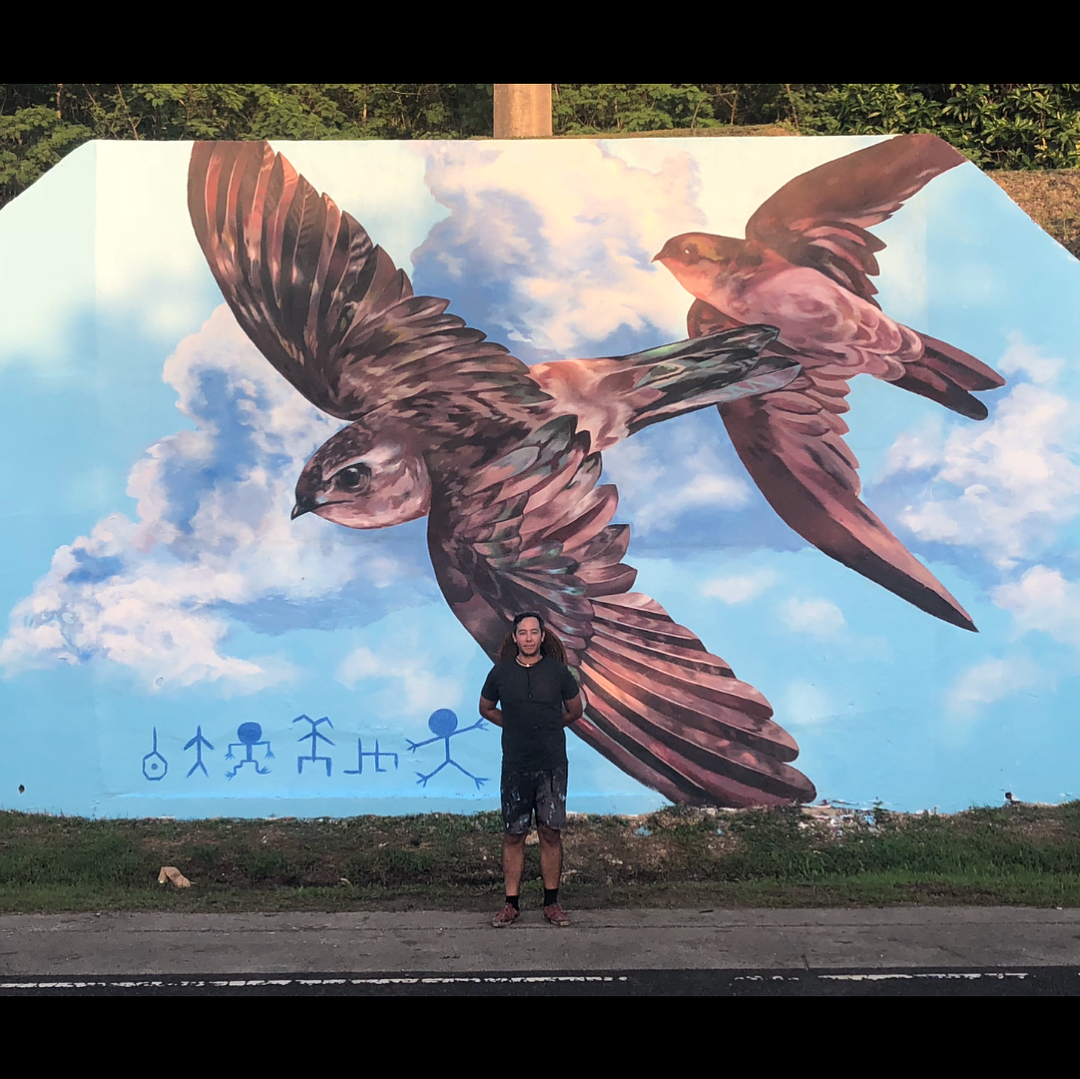
Joshua Barrigada: The style, and specifically the texture, of your work is so distinctive and very unique to you… it’s so perfectly layered it almost looks digital, it has that kinda of magic in art when you can’t figure out how the hell the artist made it. Can you talk about your process and how you came to develop the look?
Edwin Ushiro: My process is achieved by failures and mistakes. Back in the hustling days, I produced t-shirts for Fred Segal a fashion boutique in Santa Monica. One day I was ironing on a t-shirt transfer, it slipped and melted to a piece of paper. The transfer looked better to me on that piece of paper than it did on the t-shirt. This evolved into thinking what other materials I could work on.
I love transparency. So naturally, my artwork and process was drawn toward a transparent medium. The work is a confluence of digital and traditional techniques.
Jeff: So do you start digitally painting and then use transfer paper to put it on a panel or something? It always looked like vellum to me.
Edwin Ushiro: I begin with drawing with red graphite and a red ballpoint pen onto vellum. For the figures I would continue by coloring the image with watercolor or markers to get the base color down. Separately, the backgrounds are done in graphite and watercolor. They are both scanned and placed into Photoshop where I compose them together. This is the first time I am able to realize how close I got to what I had in my head.
Once everything is placed into position, I continue by coloring and rendering the image in Photoshop. The output is printed onto Epson transparent film. Then I paint on the back of the film for final adjustments of color and solidify the main subject by painting white behind the figures. When it’s an animated piece of work, it’s completely digital.

Joshua Barrigada: Your work is some of the most accurate depictions of island life, can you talk about your reasons and purpose of representing island culture and island people.
Edwin Ushiro: It’s something I want to see and as far as I know, I can’t google the same imagery that I want to capture. My art is depicting a life and era that was special to me and worth fighting for.
Joshua Barrigada: That’s a perfect example of the old adage “make the work that only you can make” – from a fellow islander (Guam ), it’s spot on.
Kimi: What are some of your secret spots or favourite things to do when you find yourself back in Hawaii?
Edwin Ushiro: There are not a lot of secret spots these days. Thank you Yelp. Sad face. My friends and many locals have their special fishing spots. Any fisherman knows you don’t reveal that. One spot that is close to my heart is Tasaka Guri Guri. They sell a Japanese style sorbet in only 2 flavors. Pineapple and strawberry. Both flavors don’t really taste like the fruit. It’s more special than that.
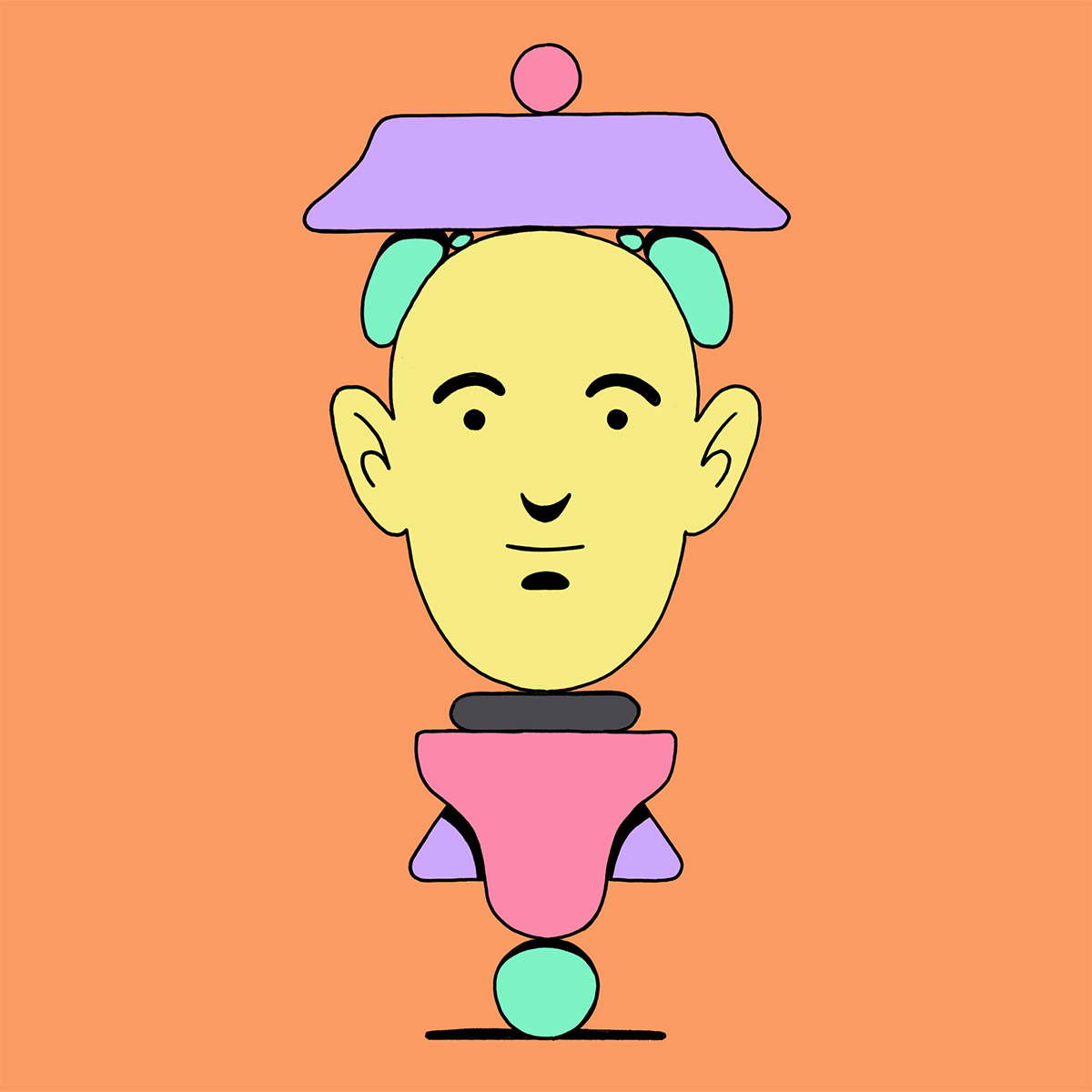
Fernando Bittar: Would love to know what your daily routine is like. Do you paint/draw every day? Work normal or weird hours, etc.
Edwin Ushiro: I enjoy routines. A typical day is waking up at 7am. I don’t need to use an alarm anymore. It’s natural if I keep my schedule consistent. I start the day by stretching and meditation. Then my wife and I take a walk. She goes to work and I hit the studio. Eating my oatmeal and tea while reading emails and checking social accounts. My studio time begins at 9am. Lunch at 12pm. Dinner at 8pm. My work day would end by 11pm.
Jeff: What have you learned from your students?
Edwin Ushiro: I learned a lot of things from my students. When I first started I was hesitant to do demos. It came from a fear of not being perfect. Although most of my demos are spot on (I’m alot more comfortable now after doing a couple of demos in every class), however, the ones where I mess up are the ones where students learn more about the creative process. It opened the conversation to how do you get back on track? What are tools you can utilize when you are having an off day?
I am confronted by questions about my creative process. It’s something I never considered because it became so natural. Some students have asked me why I hold a pencil the way I do. And I learned that it was because I rotated my pencil to maintain a sharp edge for the graphite.
Eugene Kan: What frameworks or understandings do students now need to embrace to succeed in today’s world? And, was it easier to succeed in the past due to lack of competition/noise etc.?
Edwin Ushiro: For my students that want to work in the entertainment industry, I always encourage them to expand their value to their employer. Which means being comfortable with 2D and 3D applications. 2D meaning photoshop, Painter and Illustrator. 3D meaning ZBrush and Maya.
Li Liang Johnson: You’ve got such a brilliant set of achievements under your belt as an artist, but of course the desire for growth and development will always burn brightly hey! How do your current goals compare to those you might’ve had when you were first building your career?
Edwin Ushiro: Yes, current goals grow. The more I achieve, the more I want to add onto those achievements. As an art school graduate, I made a list of goals. At that time they were all a wild dream. However, I’ve been able to achieve allot of them. To showcase my work in a museum. I’ve done a number of those. To have an art book published. My monograph, Gathering Whispers was published by Zero Plus Publishing for America, and Diagon Alley in China. See my work animated. I’ve got to do this in some capacity. However the job got scrapped as management changes. So that one is still a goal I am fighting to bring towards the surface. But once I achieve them, the bar will be raised because I see more of what I want to achieve in them.
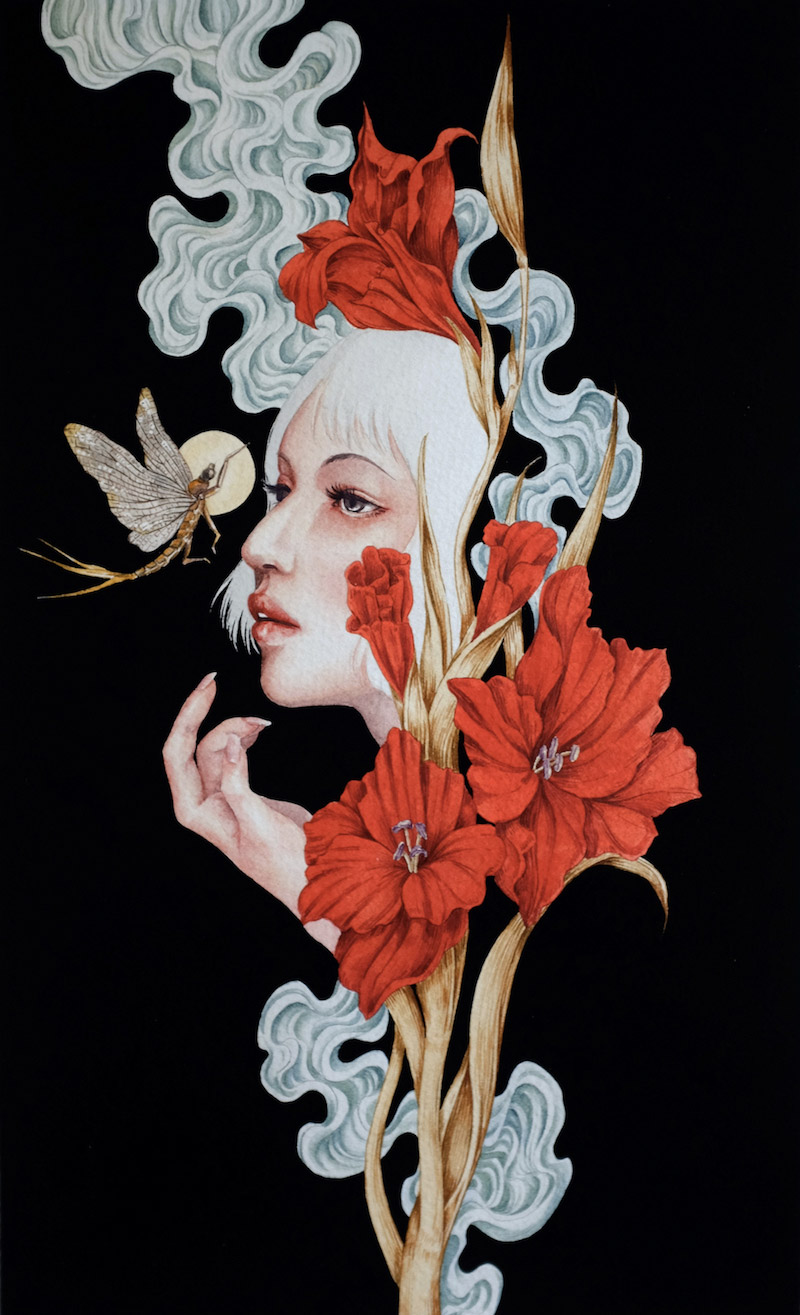
Jacquell: Your paintings are so alive. Do you paint from references or imagination? And amongst many other brilliant features of your works, I particularly dig the color choice. They are sweet and harmonic, cheerful yet nostalgic. How do you plan out the color for a painting and what’s your advice on working with colors?
Edwin Ushiro: I paint from both reference and imagination. Color is something unique to each artist. For me, it stems from my relationship to color. I remember my Aunty’s house had a green corrugated roof overlooking her yard. The light would penetrate and make everything tinted with a diluted green. That color gives me comfort. When dealing with color, I always consider the emotional state of a scene.
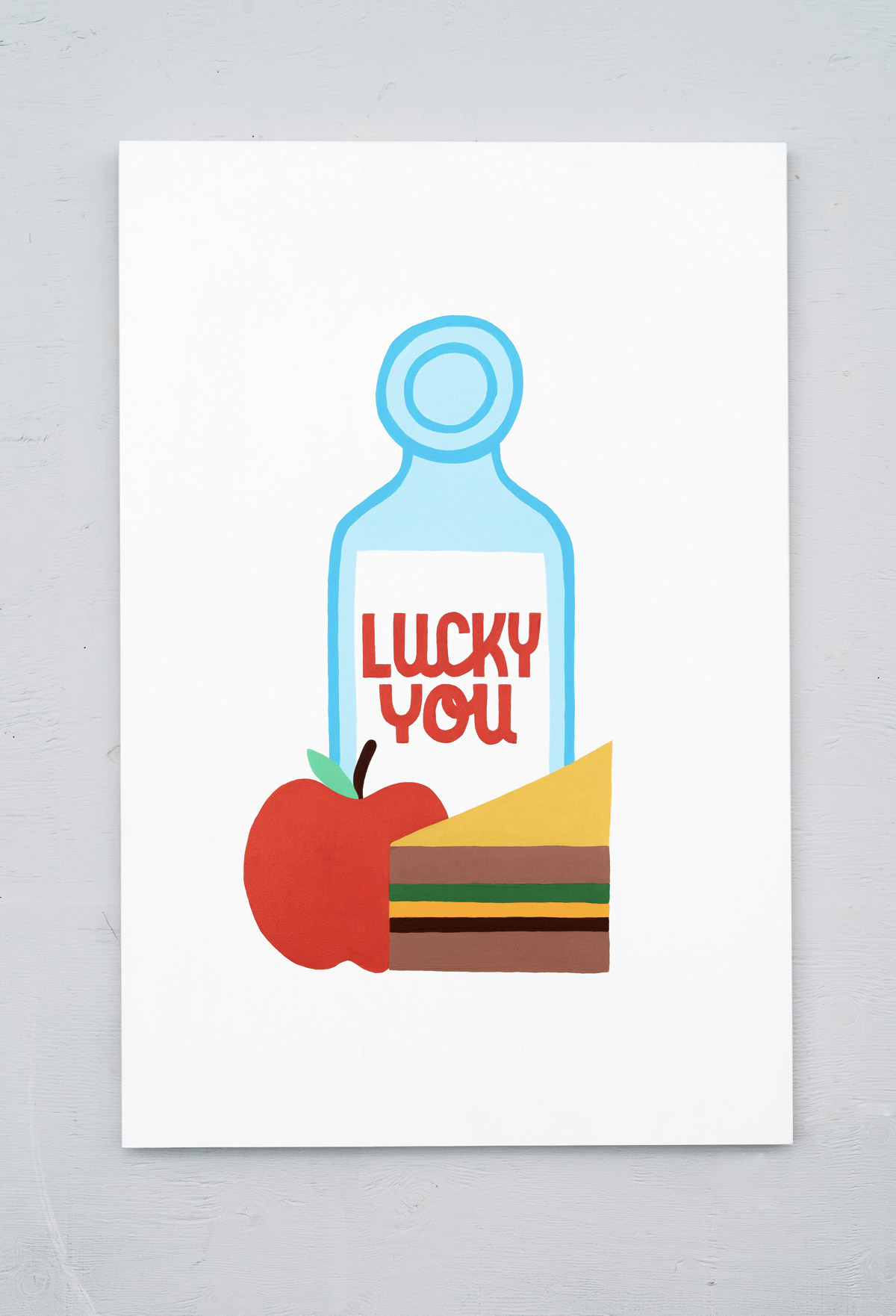
Graeme Zirk: How did teaching become part of your repertoire and how does it influence your practice today?
Edwin Ushiro: A few years ago, I was asked to lecture at Otis. The year after, Nathan Ota asked me if I would consider teaching at Otis. We talked, I got excited and accepted. Teaching influenced me greatly. For one, my drawing and painting skills have improved. I’m able to give back to the art community. Mentoring the next generation. It’s an honor.
Jeff: A question I always like to ask, who is someone who has taught you a lot and what’s one piece of advice they gave you?
Edwin Ushiro: Who is someone who has taught you a lot, is Dr. Glen Grant, Historian, Living Treasure of Hawaii and Professor at UH Manoa. He gave me encouragement that you can follow your interest and make it a career. What’s one piece of advice they gave you? is never forget where you came from.
Matt Hanns: How did you start getting your work into galleries? Did they seek you out or did you start submitting to things like open calls?
Edwin Ushiro: My co-worker at Insomniac Games did some art for a gallery called Nucleus. I always kept doing my personal art while working commercially. I made an appointment and met with the owner who gave me a solo show the following year. After that, I never approached a gallery.
Lance A.: Do you use reference photos? If so, how do you get them?
Edwin Ushiro: When dealing with reference photos, I shoot my own. Although, I learn the most by sketching from life. They are later incorporated into the artwork.
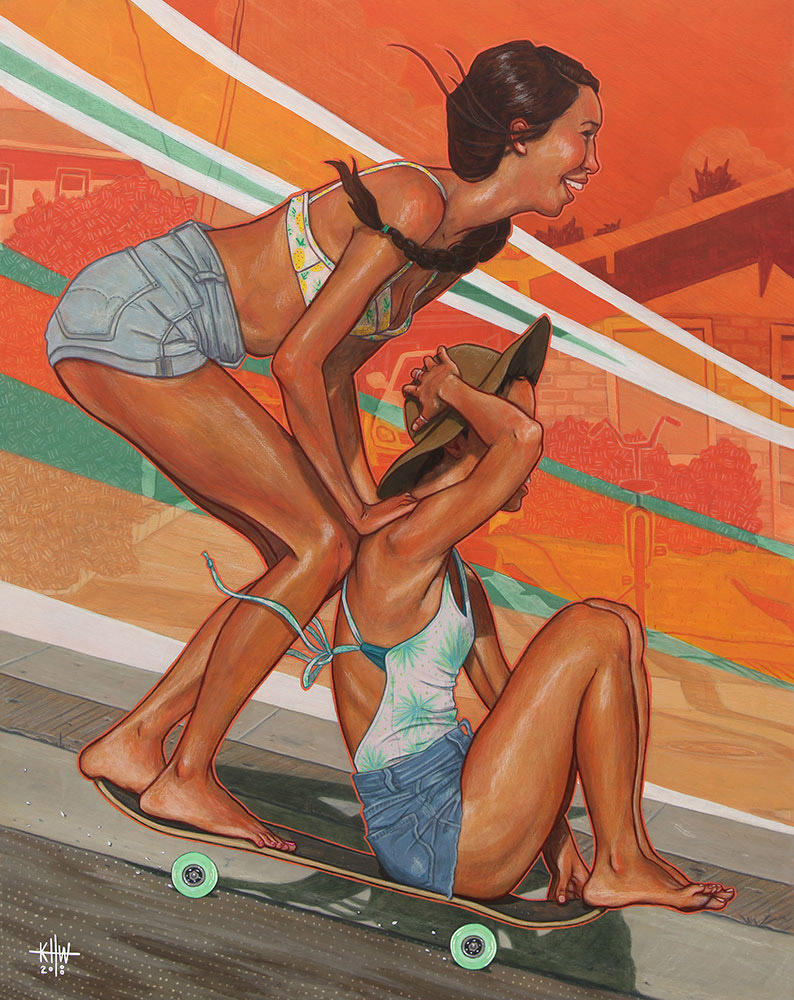
Kate Wadsworth: When did you leave Hawaii and how often do you come back to visit? Is much of your work inspired by your childhood? A lot of your work has a very dreamy/nostalgic feeling. (I grew up on Oahu and I feel a strong connection to your work, with the subject matter: children/style of houses/nature and tropical landscape).
Edwin Ushiro: Aloha Kate! I left in 1997. I return 1-2 times a year. All my personal and sometimes commercial art is influenced by my childhood.
Kate Wadsworth: I love it! What kind of commercial projects have you worked on in recent years? Could you explain how you are able to pull your personal work into commercial projects?
Edwin Ushiro: Fox Animation, Netflix, LA Metro and the Japanese American National Museum. The client or agent are the ones that will find you. If it fits the project.
Kate Wadsworth: As someone who works traditionally and digitally, do you utilize an iPad, or a tablet? How often are you using a traditional sketchbook for practice/process work/personal time.
Edwin Ushiro: If I am sketching, it’s always traditionally in my sketchbook or random scraps of paper. Commercial work tends to be all digital so moving towards physical material is quite refreshing. My sketchbook is my buddy. I take it everywhere I go. Especially when I travel. There is so much inspiration in the world to capture.
Kate Wadsworth: After doing Pow! Wow! Hawaii and Long Beach, did you enjoy painting large scale, and would you like to pursue more mural work?
Edwin Ushiro: Sure!
Pierre: What advice would you give to your younger self?
Edwin Ushiro: I would have invested more time and effort into my personal art. Placing priority into it as my main job. I think I would have gone a lot farther in my career with this action. What I learned later was that my personal art would lead me to commercial work. Commercial work based on the things I truly want to make.
Pierre: Have you been surprised by one of your students? If so, how? In his style, talent or way of thinking…
Edwin Ushiro: I am always amazed by the growth of a student in both their conceptual thinking and artists process. Never judge a students ability too soon.
Jeff: Have you thought about a body of work in a similar style but focused on your time in California?
Edwin Ushiro: My work runs semi-chronological. So yes, I will reach it some day. But actually, if you check out my sketchbook, it’s all about recording my experiences in California and my present life.
Jeff: Who are some other artists who have influenced you over the years? Maybe some from early on and some from now?
Edwin Ushiro: At Art Center it was Taylor Mckimens, Justin Wood and Saiman Chow. While working in the entertainment industry (pre-Art Station), I found Photography inspiring. Works by Weegee, Walker Evans, and Joel-Peter Witkins.
Now, I appreciate anime works by Satoshi Kon and Makoto Shinkai.
Jeff: Which is your favourite Satoshi Kon film?
Edwin Ushiro: Paprika. As a Director. And Magnetic Rose as a Writer.
Join our Secret Email Club
Our weekly newsletter filled with interesting links, open call announcements, and a whole lot of stuff that we don’t post on Booooooom! You might like it!
Sign UpRelated Articles
